This article explains various types of simple connections in steel structures, detailing their design, function, advantages, and limitations in transferring shear forces between beams, columns, and girders.
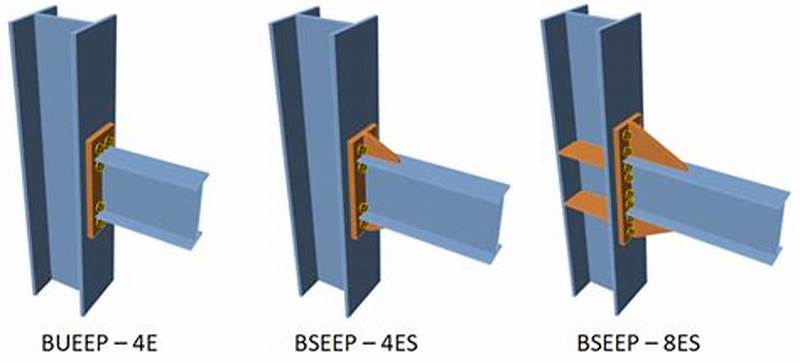
In steel construction, simple connections play an essential role in assembling structural elements efficiently. These connections allow for the transfer of forces, primarily shear, between steel members such as beams, columns, or braces. Simple connections, often referred to as shear connections, are designed to provide flexibility in rotation while ensuring strength in shear transfer. These connections are typically pinned, allowing rotation but resisting significant bending moments, making them distinct from moment-resisting connections.
Unlike moment connections, simple connections do not resist bending stresses and are therefore easier to design and fabricate. Their primary function is to transfer shear forces between components, allowing for some relative movement or rotation between members. This adaptability is crucial in many structures as it provides flexibility while maintaining overall stability. The use of these connections is particularly common in structures like frames, trusses, and braced systems.
Simple connections are highly efficient, cost-effective, and adaptable. These features make them a preferred choice for various steel construction applications, from industrial buildings to bridges. The most common types of simple connections include fin plates, end plates, cleat angles, and flexible end plates. Each type has unique characteristics suited to specific structural requirements, and understanding these is key to proper design.
This article explains various types of simple connections in steel structures, detailing their design, function, advantages, and limitations in transferring shear forces between beams, columns, and girders.
Types of Simple Connections in Steel Structures
The primary types of simple connections used in steel construction includes, end plates, fin plates, and angle cleats, among others. Each type serves a distinct function and has specific design considerations, as we will explore in more detail below.
1. End Plate Connections
End plate connections (Figure 1) are among the most widely used types of simple connections in steel structures. This connection involves welding a steel plate to the end of a beam, which is then bolted to a supporting element, such as a column or another beam. End plate connections offer flexibility, allowing for quick assembly and disassembly, making them ideal for projects that require modular or repetitive construction.
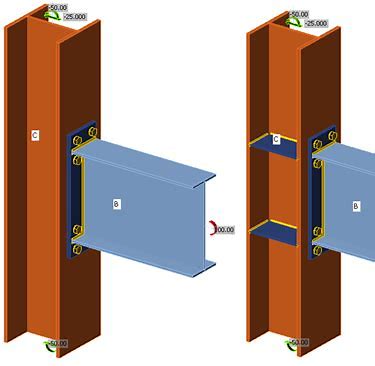
The end plate is typically connected using bolts that pass through both the plate and the adjoining member. This connection resists shear forces while permitting rotational movement, making it suitable for scenarios where moments are minimal or where rotational flexibility is desired. End plates can be categorized as flexible or rigid, depending on the thickness of the plate and the number of bolts used.
One of the major advantages of end plate connections is their ease of fabrication. Plates can be prepared in the workshop, and connections are bolted together on-site, reducing the time spent at the construction location. This method also provides the advantage of allowing for minor misalignment during assembly, which can be easily corrected with slight adjustments in the bolting process.
2. Fin Plate Connection
Fin plate connections (Figure 2), another common type of simple connection, consist of a vertical steel plate (the fin) welded to a supporting member, such as a column or beam. The beam to be connected has holes drilled in its web, which align with the holes in the fin plate. Bolts are then used to secure the beam to the fin plate, creating a shear connection that allows rotation between the members.
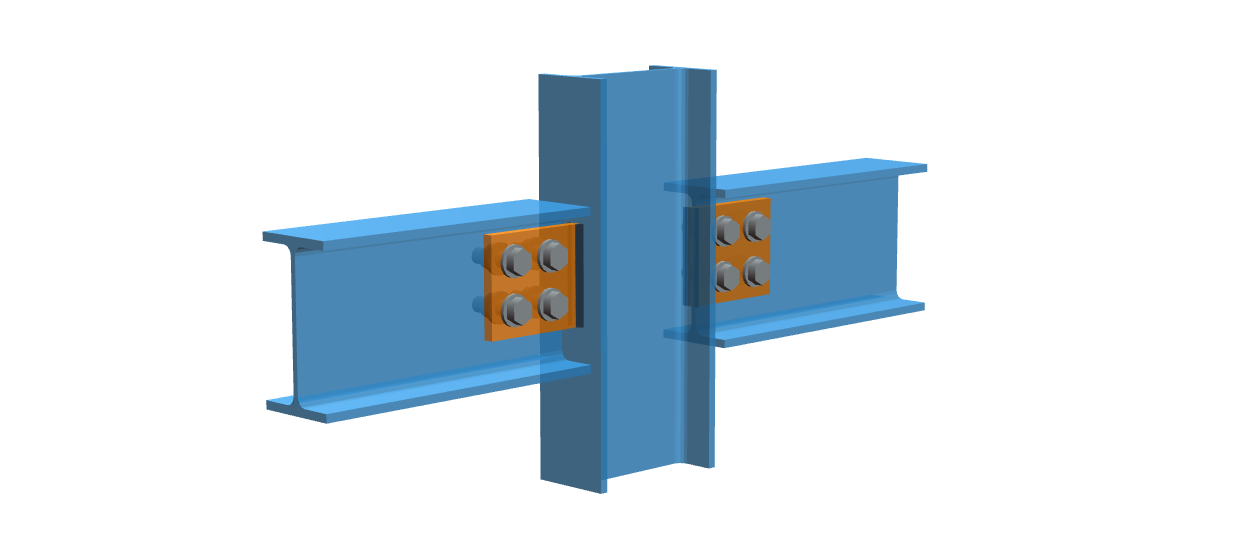
Fin plates are popular because they are simple to fabricate and install. They are particularly useful in multi-story construction, where beams must connect to columns at various heights. This type of connection allows the beam to be bolted to the fin plate without requiring precise alignment of the top and bottom flanges. The connection can accommodate some degree of movement, allowing for flexibility during assembly.
One key advantage of fin plate connections is their versatility. These connections are suitable for a wide range of structural systems, including frames and braced structures. They are also frequently used in secondary beam connections, where beams intersect with main girders. The simplicity of the design makes fin plate connections cost-effective and easy to inspect, contributing to their widespread use.
3. Cleat Angle Connections
Cleat angle connections (Figure 3) involve the use of steel angles, known as cleats, to join two members together. Typically, one leg of the cleat is bolted to a supporting member, such as a column, while the other leg is bolted to the web of the beam being connected. This creates a simple, reliable shear connection that allows some rotation while transferring forces between the members.
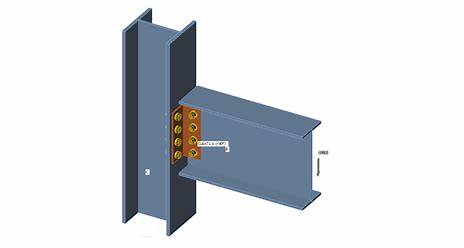
Cleat angle connections are highly adaptable and can be used for both beam-to-column and beam-to-beam connections. The angles are easy to fabricate, as they can be cut and drilled off-site, and the assembly process involves straightforward bolting. This makes them a popular choice for projects where speed and ease of installation are essential.
The cleat angle connection’s simplicity also allows for easy adjustment during erection, accommodating minor misalignment between members. Cleat angles can be installed on either side of a beam, providing redundancy and enhancing the overall strength of the connection. This versatility and ease of use make cleat angle connections a practical choice for many construction applications.
4. Flexible End Plate Connections
Flexible end plate connections are similar to standard end plate connections but use thinner plates, allowing for more flexibility. These plates are welded to the end of the beam and then bolted to the supporting structure. The thinner plate allows for more rotation at the connection, making it ideal for applications where the beam needs to accommodate some movement without transferring significant moments.
Flexible end plate connections are commonly used in low-rise buildings, warehouses, and structures where the primary concern is shear transfer rather than moment resistance. The flexibility provided by the thinner plate reduces the rigidity of the connection, which can be beneficial in reducing the overall stresses in the structure.
The design of flexible end plate is relatively simple, involving fewer bolts and thinner materials than rigid end plates. This reduces both the cost and weight of the connection, making it a cost-effective solution for many steel structures. Additionally, flexible end plates are quick to install and require minimal adjustments during erection.
5. Double Angle Connection
Double angle connections consist of two steel angles that are bolted to both the supporting member (usually a column) and the beam web. The angles are typically placed on either side of the beam web, creating a strong and stable shear connection. This connection type provides rotational flexibility while ensuring that shear forces are efficiently transferred between the members.
Double angle connections are widely used in steel construction due to their strength and simplicity. They are particularly well-suited for beam-to-column connections, where they provide reliable support while allowing for slight rotational movements. The angles can be easily fabricated and bolted on-site, making them a popular choice for fast-track construction projects.
In addition to their simplicity, double angle connections offer flexibility in the design. The size and number of bolts can be adjusted to meet the specific requirements of the structure, allowing for customization based on the load conditions. This makes double angle connections a versatile option for a wide range of steel-framed buildings and structures.
6. Seated Connection
Seated connections involve placing the end of a beam on a steel seat, typically an angle or plate, which is bolted or welded to the supporting member. The beam’s end rests on the seat, providing a simple and effective shear connection. Additional bolts may be used to secure the top flange of the beam, but the primary support comes from the beam bearing on the seat.
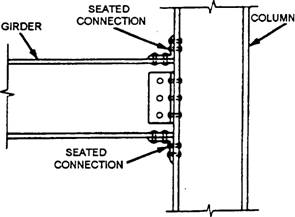
Seated connections are often used in scenarios where the beam needs to transfer vertical loads while allowing for rotation. These are particularly useful in industrial buildings, where heavy beams must be supported without complex assembly processes. The simplicity of seated connections allows for easy adjustment and alignment during installation.
One key advantage of seated connections is their ability to carry substantial vertical loads. The beam’s end bearing on the seat provides a high level of support, making this connection suitable for heavy-duty applications. At the same time, the connection’s design allows for some rotational flexibility, ensuring that the structure can accommodate minor movements under load.
7. Shear Tab Connection
Shear tab connections involve the use of a single plate (the shear tab) that is welded to the supporting member, such as a column, and bolted to the web of the beam. This creates a simple shear connection that allows for rotation while transferring forces between the members. The shear tab acts as a hinge, providing flexibility in the connection.
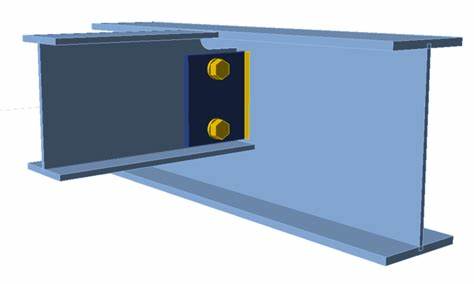
Shear tab connections are often used in steel frames, particularly for connecting beams to columns. The design is straightforward, with the shear tab welded to the column and then bolted to the beam web. This allows for quick installation and provides a reliable shear transfer mechanism.
One of the primary benefits of shear tab is their ability to accommodate movement. The connection allows for rotation between the beam and the column, making it ideal for structures where flexibility is required. Additionally, shear tab is easy to inspect and maintain, contributing to their widespread use in steel construction.
Also See: Moment Resisting Connection in Steel Frames
Conclusion
Simple connections in steel structures provide essential shear transfer while allowing for flexibility in rotation. The most common types include end plates, fin plates, cleat angles, flexible end plates, double angles, seated connections, and shear tabs. Each type offers specific advantages suited to different structural requirements, making them versatile options in modern steel construction. Whether the project involves industrial buildings, bridges, or multi-story structures, they provide cost-effective, efficient solutions for connecting steel members. Their ease of installation, adaptability, and strength continue to make them a fundamental element of steel construction